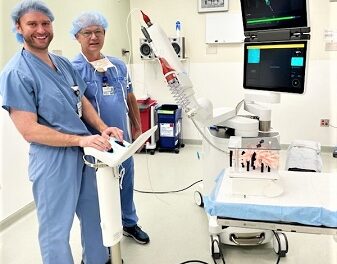On October 2, 2022 – the Florida Division of Emergency Management (FDEM) announced that it has taken groundbreaking steps to expedite recovery from Hurricane Ian. By utilizing the advanced prestaging and deployment of state recovery teams, and securing 100% Category A assistance for 30 days, Florida has paved the way for municipalities to expedite debris removal.
“Under Governor DeSantis’ leadership, the Division is empowered to improve our processes and make sure communities have the resources they need to begin their long-term recovery efforts,” said FDEM Director Kevin Guthrie. “Hurricane Ian brought catastrophic damage to Southwest Florida, but we will be with impacted communities every step of the way as they begin to recover and rebuild stronger.”
Prior to Hurricane Ian’s landfall in Southwest Florida, FDEM positioned five teams along the projected path of the storm alongside FEMA partners to immediately begin conducting rapid damage assessments after Hurricane Ian in impacted areas. These teams toured counties prior to landfall to better assist with determining the level of impact after Hurricane Ian.
Typically, counties conduct their own preliminary damage assessments after the storm, which can take days or even weeks. After that, FEMA will conduct assessments alongside the county to determine Public Assistance funding.
Thanks to advanced coordination with federal, state, and local partners, FDEM has conducted the damage assessment process in a more comprehensive and expedited manner to ensure counties can quickly receive the FEMA Public Assistance funding needed to begin the long-term recovery process. To date, these teams have conducted assessments in 29 counties, including Collier, Charlotte, and Lee counties.
On September 28, Governor DeSantis requested a Major Disaster Declaration for all 67 counties, the Miccosukee Tribe of Indians of Florida and the Seminole Tribe of Florida to ensure FDEM could quickly transition into response and recovery after Hurricane Ian’s landfall. The Declaration makes federal funding available to state, local and tribal governments and eligible nonprofit organizations in affected areas for debris removal and emergency protective measures on a cost-sharing basis. Typically, this request is not made until disaster assessments have been made after the storm. The letter with this request can be found here.
Currently, Charlotte, Collier, DeSoto, Flagler, Hardee, Hillsborough, Lee, Manatee, Orange, Osceola, Pinellas, Polk, Putnam, Sarasota, Seminole, St. Johns, and Volusia counties are also eligible for FEMA Individual Assistance, which may include temporary housing assistance, basic home repairs and certain other uninsured disaster-related needs. Florida survivors who live in these counties can apply for assistance online by visiting www.disasterassistance.gov or calling 1-800-621-3362.
On September 24, the Small Business Administration approved Home Disaster Loans, Business Physical Disaster Loans, and Economic Injury Disaster Loans for businesses, homeowners, renters and nonprofit organizations in Charlotte, Collier, DeSoto, Hardee, Hillsborough, Lee, Manatee, Orange, Osceola, Pinellas, Polk, Sarasota, and Seminole Counties. Economic Injury loans are available in Brevard, Broward, Glades, Hendry, Highlands, Indian River, Lake, Miami-Dade, Monroe, Okeechobee, Pasco, Sumter, and Volusia counties. Residents can apply for loans here.
Mental health resources are also available to survivors experiencing emotional distress. FDEM maintains a running list of resources available to disaster survivors and first responders here. Individuals can call or text the Disaster Distress Helpline at 800-985-5990 for free crisis counseling.



























